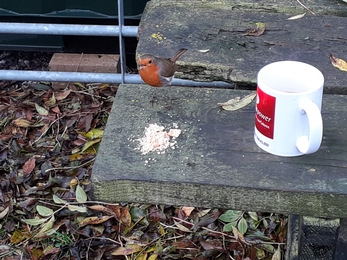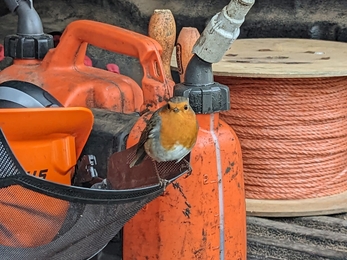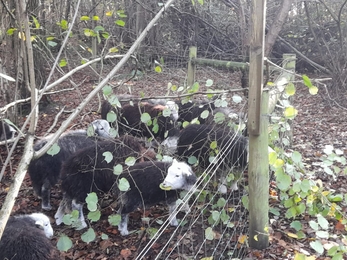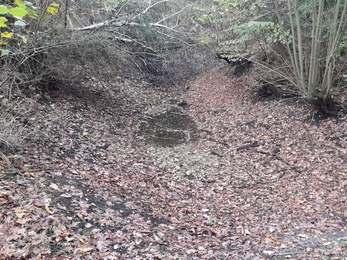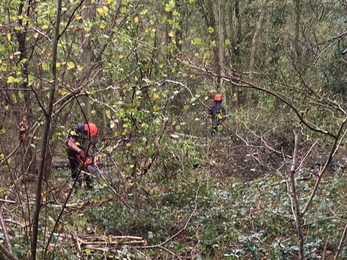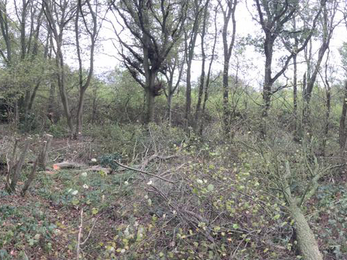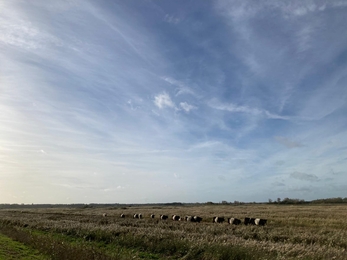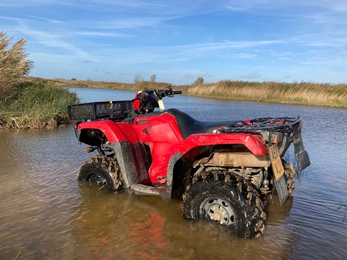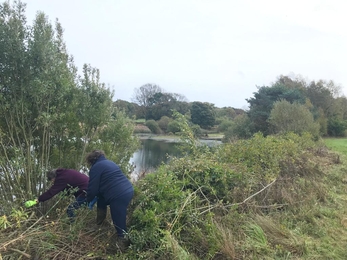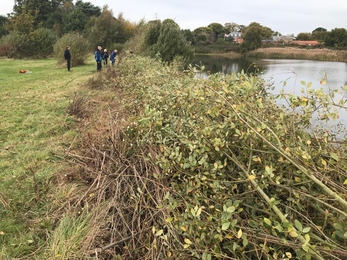Weekly wild news from our reserves - 11 November 2022
Hare at Carlton Marshes – Gavin Durrant
This very bold robin seemed keen to join in the work at Trimley Marshes this week. He joined the team for their tea break, and then even got in the back of the truck!
Coppicing companions
Our (incredibly cute!) Herdwick lambs grazing the Hewwit’s meadow at Bradfield Woods have been taking a keen interest in the coppicing work, especially when they get some trimmings to munch on. The meadow’s ponds are just beginning to fill with water again following the summer drought.
Coppicing teamwork
The West Suffolk Reserves wardens spent a day together in Bull’s Wood carrying out some coppicing on the south side of the wood. Restorative work!
Winter wetlands for waders
Wardens Gavin Durrant and Frances Lear opened the Penstock sluice this week, allowing water to pass from the river into the northern compartment of Peto’s Marsh. Filling this compartment will provide a fantastic habitat for wintering wildfowl and create islands for spring breeding waders safe from predators. During the summer, the water is gradually released into the scrapes to prevent them from drying out, providing ideal feeding conditions for the waders. The video below shows the river water pouring out into Peto’s Marsh which will end up increasing the water depth on the marsh by around 50cm, submerging some of the exposed ground.
Warden Andy Hickinbotham has also been hard at work at Oulton Marshes altering pipe sluices to allow winter flooding for waders and wildfowl.
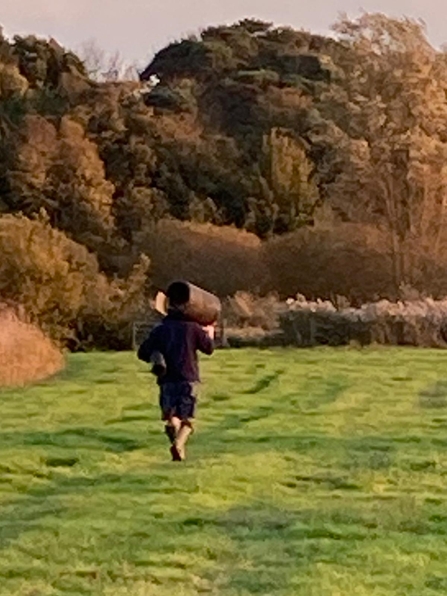
Altering pipe sluices – Andy Hickinbotham
Bittern caught on camera
The bittern is a rare and shy heron, which spends almost all its time hidden away in large reedbeds, where it feeds on eels and other fish. It has wonderfully camouflaged plumage, helping it to blend into the reeds, and can also stand motionless for long periods to avoid detection. This one was caught unaware by our trail cameras at Carlton Marshes, and then spotted hiding in the reeds by Warden Gavin Durrant.
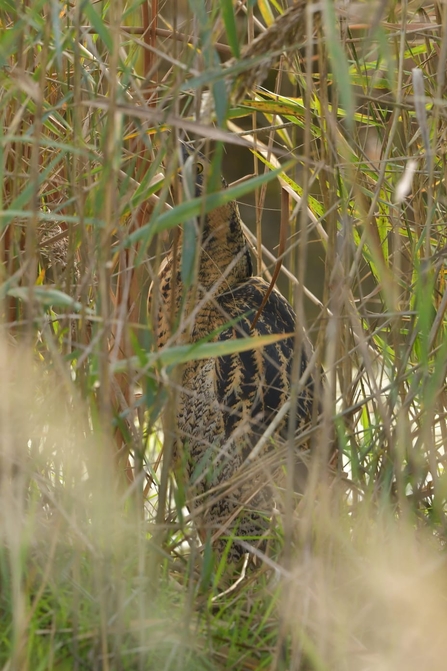
Bittern hiding in the reeds on Peto’s Marsh – Gavin Durrant
Hiding hare
This hare at Carlton Marshes also thought it was better disguised than it was, allowing Warden Gavin Durrant to get a lovely close-up snap.
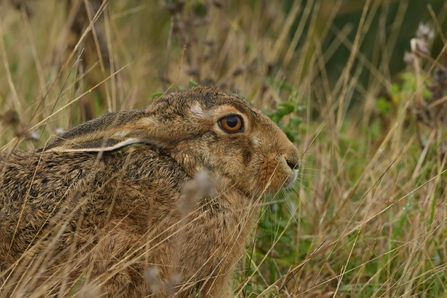
Hare at Carlton Marshes – Gavin Durrant
Anticipating cranes
Sites Manager Matt Gooch has been out on the quad bike in very wet conditions to check on the Belties (Belted Galloway cattle) which are currently grazing the reedbed areas of Carlton Marshes. Grazing benefits many specialist reedbed species by creating a diversity of structure through a combination of munching and trampling. Cranes, however, are not keen on being disturbed by livestock, so we plan to move the cattle before February when the cranes might arrive in search of prospective nesting grounds. Cranes tend to choose their nest sites towards the end of winter, and then they hopefully return to the site to breed in early spring.
More muddy edges
Tractor escort driver and Warden Andy Hickinbotham has been multitasking working in the outdoors office whilst NE Site Manager Matt Gooch made new scrapes and refreshed muddy edges with the oversized rotavator on Oulton Marshes (kindly lent to us by the RSPB). We look forward to seeing wintering bird visitors and next year's breeding waders flocking to this new habitat.
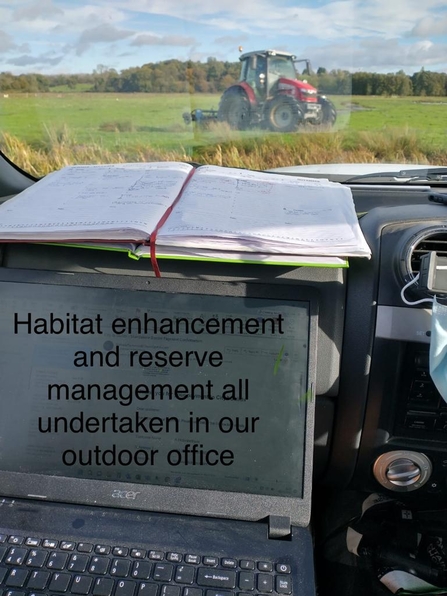
New scrapes and outdoor office - Andy Hickinbotham
Mixed regeneration
Wardens Andy Hickinbotham & Gavin Durrant spent a productive day at Lound Lakes, coppicing and copparding willow, and ring barking birch to create mixed regeneration regrowth, leaving standing dead wood and a brash barrier to prevent deer browsing.
The wonderful Lound volunteers have also been busy coppicing lakeside willow to create mixed generation growth, and a dead hedge line to encourage bramble growth for invertebrates, breeding birds and berries for arriving winter thrushes.
White saddle
Reserve Intern Anneke Emery snapped this ethereal white saddle fungus at Bradfield Woods – definitely our favourite fungi of the week!
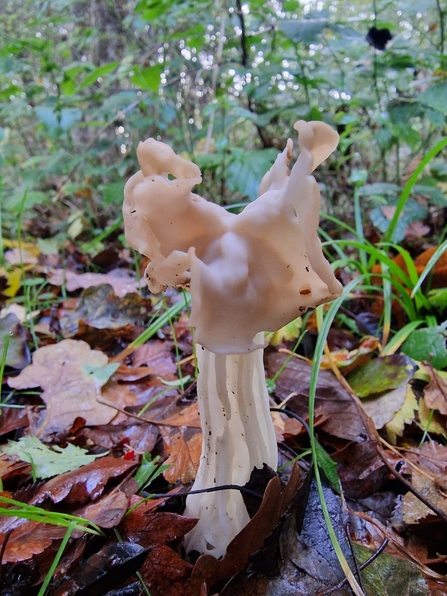
White saddle fungus Helvella crispa –Anneke Emery
Rewilding beside the River Deben
We have extremely exciting plans to create an amazing new nature reserve alongside the River Deben, to be called Martlesham Wilds. An organic farm for many years, the land is already home to a wonderful array of plants, animals and invertebrates. Protecting this beautiful place and giving nature more space to thrive will bring back the abundance of wildlife that is missing from our countryside.
Under our stewardship the patchwork of hedge-lined fields that roll gently down to the river will gradually ‘wild’ into an intricate mosaic of natural habitats, maintained by grazing. The emergence of this new pastoral landscape will be thrilling to watch. This is a rare chance to create a new nature reserve, and its success depends upon a fundraising appeal for £1 million. Find out more https://www.suffolkwildlifetrust.org/martlesham-wilds

